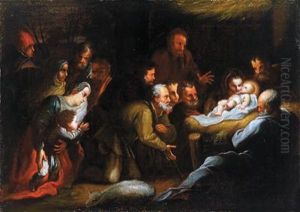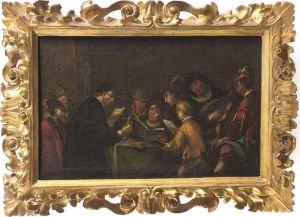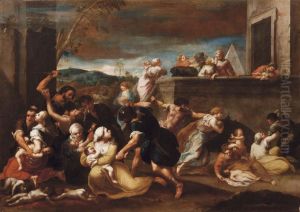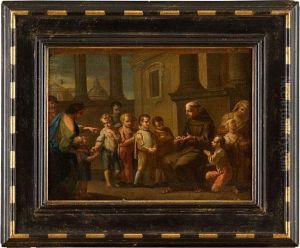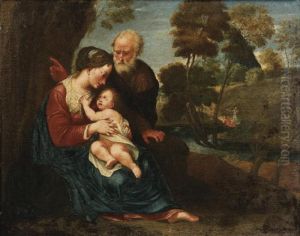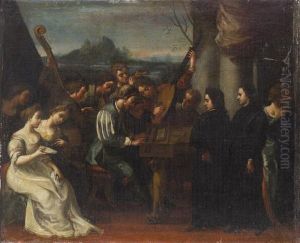Pasquale De Rossi Paintings
Pasquale De Rossi was an Italian painter and architect, born in 1641 in Rome, Italy. He was part of the Baroque period, a time characterized by dramatic intensity, rich color, and dynamic movement in the arts. While not as widely recognized as his contemporaries like Gian Lorenzo Bernini or Francesco Borromini, De Rossi contributed to the rich tapestry of Baroque art and architecture in Rome during the 17th and early 18th centuries.
De Rossi received his initial training in Rome and was influenced by the grandeur of the city's architecture and the works of prominent artists of the time. He was known to be a versatile artist, adept at both painting and architecture, which was not uncommon for the time. However, due to the limited documentation on his life and the overshadowing fame of his peers, specifics about his training and early career are not as clear as those of more famous artists.
His architectural works are noted for their ornate style and the integration of painting and sculpture to create immersive environments. As a painter, his works were marked by a strong use of light and shadow, typical of the Baroque style, and often depicted religious scenes and figures, which were in high demand by the church and private patrons.
Pasquale De Rossi's legacy is largely through the buildings and artworks he left behind, which continue to be studied and appreciated for their artistic merit and historical significance. Although not much is known about his personal life, his contributions to the Baroque aesthetic have cemented his place in the history of Italian art. He passed away in 1725 in Rome.
